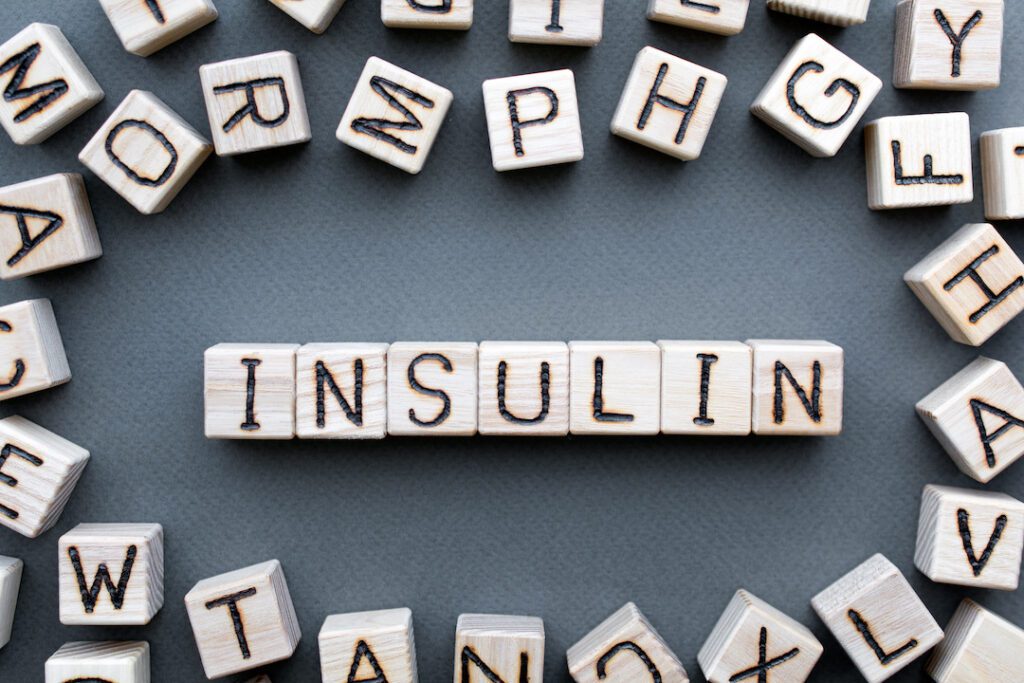Am I insulin resistant?
This may very well be a question you ask yourself if you are overweight and just can’t seem to lose that stubborn abdominal fat. 1 in 3 people in the United States have prediabetes, according to the CDC, and prediabetes often occurs in people with high insulin resistance1. While individuals who have insulin resistance, aren’t necessarily prediabetic, having insulin resistance is still a cause for concern. Read on to discover why and what you can do it about it.
What is insulin resistance and why is it important?
Your pancreas makes the hormone insulin, which absorbs and uses glucose. Insulin and your pancreas work together to keep sugar levels in your blood healthy. When your pancreas’ ability to release insulin into the bloodstream decreases, and when your insulin receptors resist the effects of insulin, your blood sugar rises above normal— this is called insulin resistance2. And insulin resistance can result in prediabetes, and if unmonitored or not addressed can lead to diabetes.
This process results in higher insulin levels as the pancreas puts out more insulin trying to compensate for the lack of insulin response. Higher insulin levels signal the body to store fat, especially in the abdominal area – which can result in visceral fat, which is the fat stored internally around your abdominal organs. Visceral fat causes internal organs like the liver to become inflamed and fatty, and this is dangerous to the body. Visceral fat can put you at higher risk for heart disease, high cholesterol, and diabetes3.
How can you tell if you’re insulin resistant?
While there are no tell-tale symptoms of insulin resistance, there are risk factors:
- Being overweight or obese and having an abdominal measurement greater than 35 inches in women or 40 inches in men
- Having a sedentary lifestyle
- Smoking
- Sleep issues
- High blood pressure
- High cholesterol
- High carbohydrate diet
How can I prevent and fight insulin resistance?
There are three main ways you can prevent and fight insulin resistance.
First, exercise. Leading an active, healthy lifestyle can reverse insulin resistance, so aim to get moving thirty minutes a day, five days a week for a total of 150 minutes weekly.
Secondly, eat low-carbohydrate meals, and stick to a high protein, low-sugar diet, like the RM3 diet. “Protein helps keep your body’s blood sugar levels stable, whereas high carbohydrate diets can cause spikes in blood sugar that only make insulin resistance worse,” reports GoodRx4. We have plenty of RM3 approved recipes to choose from, so get creative in the kitchen!
Finally, we have a revolutionary new supplement that specifically targets insulin resistance: RM Resist. Not only does it fight the effects of insulin resistance but helps to restore metabolism, control sugar cravings, increase energy, reduce stress, and promote weight loss. A real gamechanger in the fight against obesity!
“RM Resist is a powerful tool to be used in the fight against obesity and weight gain,” says Founder of Red Mountain Weight Loss, Dr. Bentz, “It is research-based and backed by science. RM Resist is a unique and proprietary formula available only at Red Mountain Weight Loss.”
RM Resist is now available online, go fight insulin resistance today!
1 (June 2020). “What is Prediabetes?”. https://www.cdc.gov/diabetes/basics/prediabetes.html
2 Weatherspoon, Deborah. (March 2019). “What to know about insulin resistance”. https://www.medicalnewstoday.com/articles/305567
3 Gotter, Anna. (June 2021). “Visceral Fat”. https://www.healthline.com/health/visceral-fat
4 Freeland, Megan. (September 2019). “Insulin Resistance: How to Recognize the Symptoms and Reverse It”. https://www.goodrx.com/blog/insulin-resistance-diabetes-causes-symptoms-how-to-reverse/


















